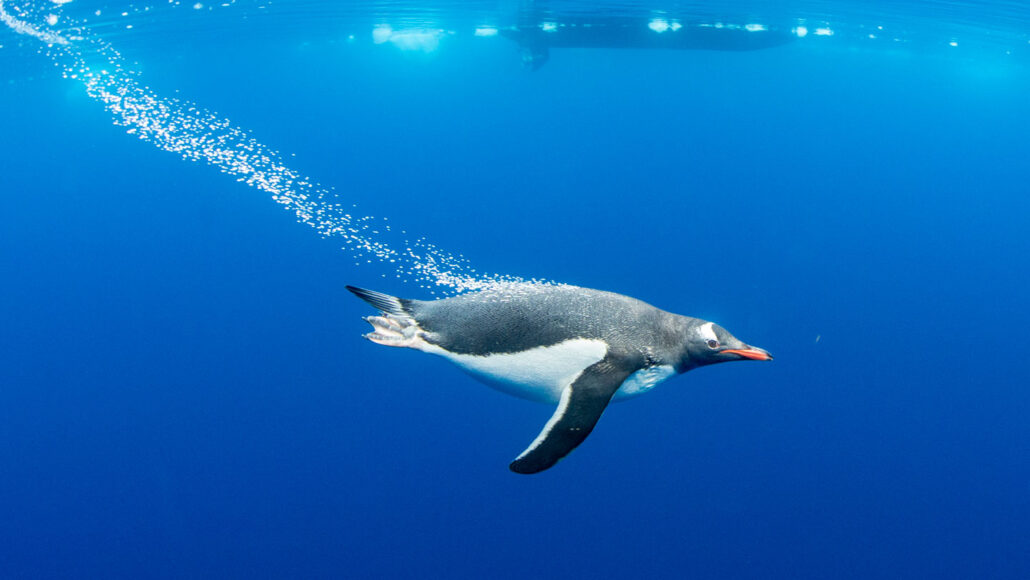‘Feathering’ helps explain Gentoos’ record-breaking swim speed
Future underwater vehicles could take some propulsion tips from these penguins

Penguins may be flightless, but their wings are a powerful source of speed underwater.
Michael Nolan/robertharding/Getty Images
By Sarah Wells
Listen to this story:
Have feedback on the audio version of this story? Let us know!
Gentoo penguins cut through water with shocking speed. These Antarctic birds are only about the size of human toddlers. Yet they can swim up to 35.4 kilometers (22 miles) per hour. That makes them the fastest swimming birds in the world. Now, scientists think they’ve figured out how they do it. The birds’ trick, appropriately enough, is called “feathering.”
This motion affects the angle of the penguins’ wings while swimming. And that gives them a huge speed advantage. This emerged from watching videos of the birds and running computer analyses on their motions.
Bo Yin and his colleagues shared what they learned June 20 in Physics of Fluids. Yin is a mechanical engineer at the Chinese Academy of Sciences in Beijing.
“Penguins are one of the cutest animals,” he says. But it’s not only penguins’ charm that drives Yin to study them. Understanding their swimming speed, he notes, could help design better underwater vehicles or robots.
Gentoo penguins have paddle-shaped wings. These taper at the end, much as do the wings on Boeing 747 airplanes. On planes, that wing shape creates an upward force called lift that allows a plane to fly. On Gentoo penguins, paddle-like wings create thrust that pushes the birds forward through the water.
To understand how, Yin and his colleagues took videos of penguins swimming at their local aquarium. They also built computer models of penguin wings in motion. That’s where they saw the impact of that “feathering.”
In this maneuver, a penguin tilts the bottoms of its wings forward or back. That changes the angle of its wings relative to the water. It also can cut down the amount of water resistance against a penguin’s wings, letting it zoom ahead faster.
How often a Gentoo flaps its wings also plays an important role in speed. Flapping many times per second can generate more thrust that pushes a penguin forward. But it requires a penguin to tilt its wings more, using more energy. So, it’s not necessarily the most efficient way to gain speed.
Like Goldilocks, a penguin’s perfect swimming speed comes from a “just right” mix of flapping speed and wing angle. Yin and his team found the most efficient combination is for penguins to tilt their wings back 18 degrees and flap about once per second.
These small details help Gentoos propel themselves through the water with record speed.
Hiroto Tanaka is a mechanical engineer at Tokyo Institute of Technology in Japan. He wasn’t part of the new research, but his lab has studied the physics of penguin movement. A computer model can capture many key details of penguin wings, he says. But it’s not 100 percent accurate.
“This simulation was still simpler than the real penguin,” Tanaka says. It didn’t account for how flexible a real bird is, he notes. Plus, “the wing model was flat.” In the future, he says, “more detailed, realistic conditions [should] follow up the present work.”







